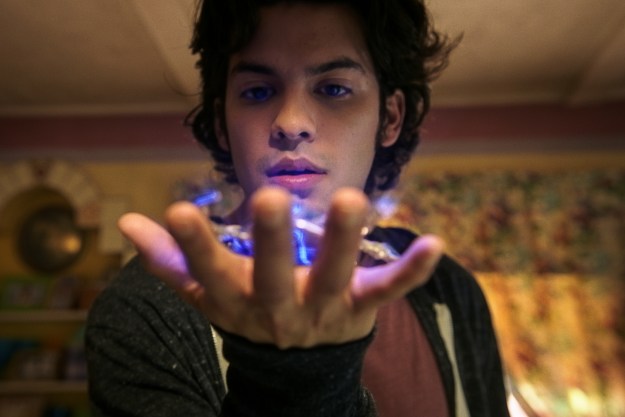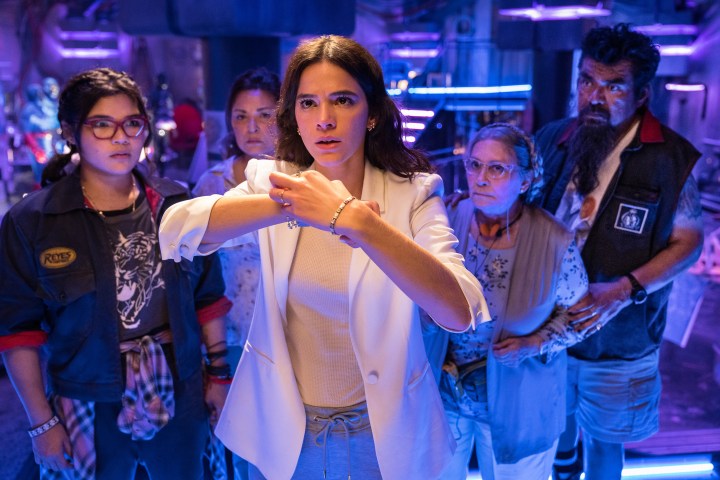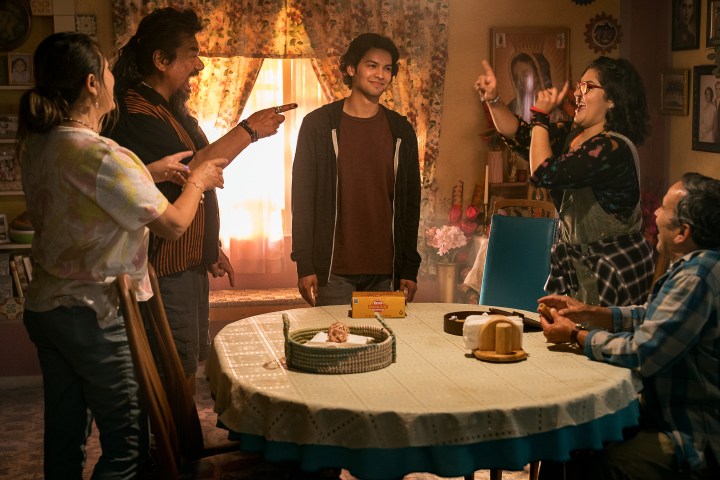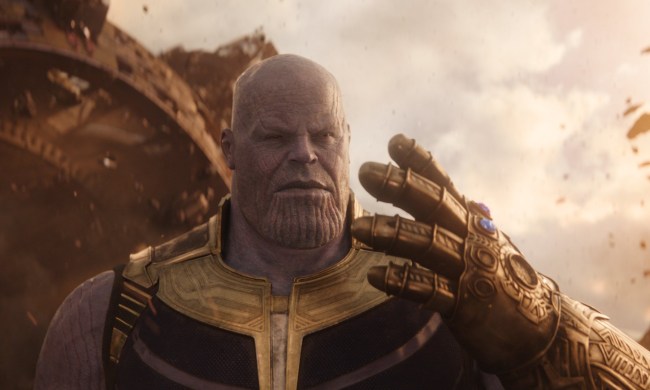
“Blue Beetle is an occasionally charming, often likable movie that gets squished beneath the weight of Hollywood's unbending, increasingly uninteresting superhero tropes.”
- A charming, earnest lead performance
- A compelling, likable supporting cast
- Several moving family scenes
- Susan Sarandon's over-the-top performance
- Unimpressive lighting and cinematography
- CGI set pieces and superhero fight scenes fall flat
The one thing you can’t say about Blue Beetle is that it doesn’t have heart. On the contrary, it’s practically overflowing with it. The film is among the most earnest comic book movies in recent memory, one that stands in stark opposition to the cynical, financial-driven interests of this summer’s other DC superhero blockbuster, The Flash. At no point throughout Blue Beetle does it feel like its director and cast are taking their audience’s time and interest for granted, nor does the film ever dip into the kind of commercial soullessness that has plagued the superhero genre for years now.
Unfortunately, none of this means Blue Beetle is good, either. In its best moments, the film feels like the kind of big-budget portrait of a modern, multigenerational Latino family that American moviegoers have rarely gotten the chance to see. At its worst, it feels like a well-intentioned, would-be family dramedy chained to the same frustratingly unbending formula followed by so many of the superhero films that have come before it. The movie that emerges from that unspoken conflict is one that feels simultaneously refreshing and mind-numbingly by the numbers.

At the center of Blue Beetle is Jaime Reyes (Cobra Kai star Xolo Maridueña), a college graduate who finds himself working thankless cleaning jobs with his younger sister, Milagro (Belissa Escobedo), in order to save their father, Alberto (a radiant Damián Alcázar), and the rest of their family from losing their home. When he subsequently steps into the middle of a conflict between Victoria Kord (Susan Sarandon), a mercenary billionaire businesswoman, and her well-meaning niece, Jenny (Bruna Marquezine), he gets an off-the-cuff job offer from the latter.
His quest to follow up with Jenny, however, results in her temporarily entrusting him with an alien device known only as “the scarab.” When he eventually touches it at the behest of his family, he becomes biologically bonded to the scarab and granted access to its black-and-blue super suit, as well as its multitude of weapons and technological capabilities. His unexpected powers put not only himself, but also his entire family, on the radar of both Sarandon’s Victoria and her android henchman, Conrad Carapax (Raoul Max Trujillo), who believes it’s his destiny to bond with Jaime’s scarab. In typical superhero movie fashion, Jaime’s conflict with Victoria and Conrad leads to plenty of explosive, oversized physical and militaristic confrontations.
The film’s plot is, by and large, the weakest part of it. Despite running a full two hours, Blue Beetle struggles to cohesively bind its quieter, familial moments with its louder, considerably less interesting superhero elements. Its best and most vibrant action sequence comes early on, and it follows Maridueña’s Jaime as he’s suddenly physically and biologically bonded with an alien weapon of unbelievable power. The sequence, which begins with Jaime’s legitimately horrifying transformation and ends with him falling back through the roof of his childhood home, is Blue Beetle at its most carefree and playful. The set pieces that follow, however, fail to replicate its spirit and energy.

By the time Blue Beetle has devolved, like so many superhero movies before it, into nothing more than endless shots of CGI models punching each other, it’s hard not to feel like the film has forgotten its best parts. Its climactic attempts to tie its rock-em-sock-em action beats back into its characters’ pasts and relationships are undeniably admirable, too, but they come across as clunky when jam-packed into fight scenes where they make little logical sense. While director Ángel Manuel Soto brings real grace and elegance to Blue Beetle’s most intimate scenes, there are moments where Pawel Pogorzelski’s cinematography, whether by creative decision or budgetary restrictions, looks disappointingly flat and cheap.
These missteps prevent Blue Beetle from achieving the kind of visual splendor that could have helped lift up even its most clichéd action beats. The film’s comic book elements aren’t helped, either, by the fact that its two villains, Sarandon’s Victoria and Trujillo’s Carapax, frequently feel like one-note caricatures compared to the rest of Blue Beetle’s characters. Sarandon’s antagonist, in particular, feels out of place, and the actress gives an over-the-top, uncalibrated performance that sticks out like a sore thumb in a film that strives to achieve a sense of emotional realism between its characters. In the end, Blue Beetle’s straightforward superhero parts are so much weaker than everything else in it that they feel like they belong in a different movie altogether.
They certainly don’t fit in a film that frequently feels more lived-in and culturally specific than 99% of the Hollywood blockbusters that are made these days. Over the course of its 127-minute runtime, Blue Beetle goes out of its way to fully flesh out its central family, imbuing not only Jaime, but all of his loved ones, with shocking levels of emotional depth. Never before has a superhero’s family members felt as important on-screen as they do in Blue Beetle, which refuses to paint them just as the tragic figures in Jaime’s vigilante life. Here, his grandmother (a scene-stealing Adriana Barraza) and uncle (George Lopez, in fine form) are treated with just as much respect as Blue Beetle’s eponymous hero.

The authenticity that Soto and writer Gareth Dunnet-Alcocer bring to the Reyes family’s home life only makes Blue Beetle’s inability to fully explore their world, city, and history all the more frustrating. Whenever it feels like the film has gotten into a real, emotionally-driven groove, it’s forced to insert an exposition dump or set piece that doesn’t pack nearly as much power as many of its one-on-one conversation scenes. Blue Beetle, consequently, makes it clear that good intentions and an open heart can only take certain films so far.
It’s a movie that reaffirms, in case anyone still needed to be convinced, that Latino characters deserve to be given the same big-budget opportunities as everyone else. It also proves what can happen when a movie is only allowed to truly be itself for half of its runtime. Ultimately, it’s only half-successful, and the parts of Blue Beetle that work say just as much about the film itself as they do about the current state of the entertainment industry. If not even a movie as occasionally charming as Blue Beetle can breathe new life into the superhero genre’s most well-worn formulas, then it seems safe to say that the luster is definitely gone now.
Blue Beetle is now playing in theaters.



